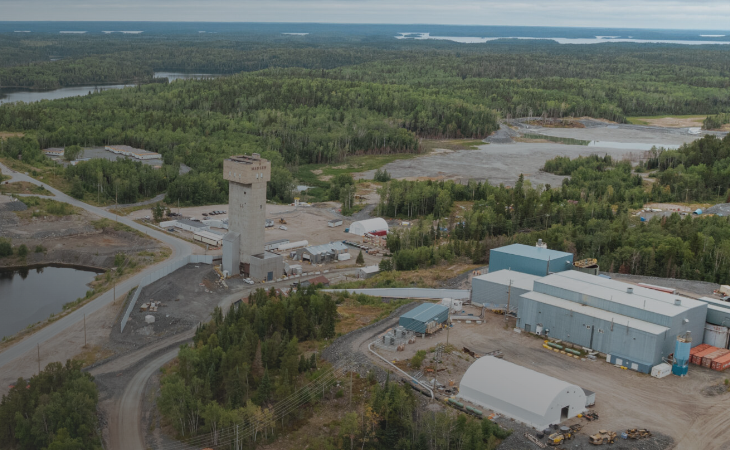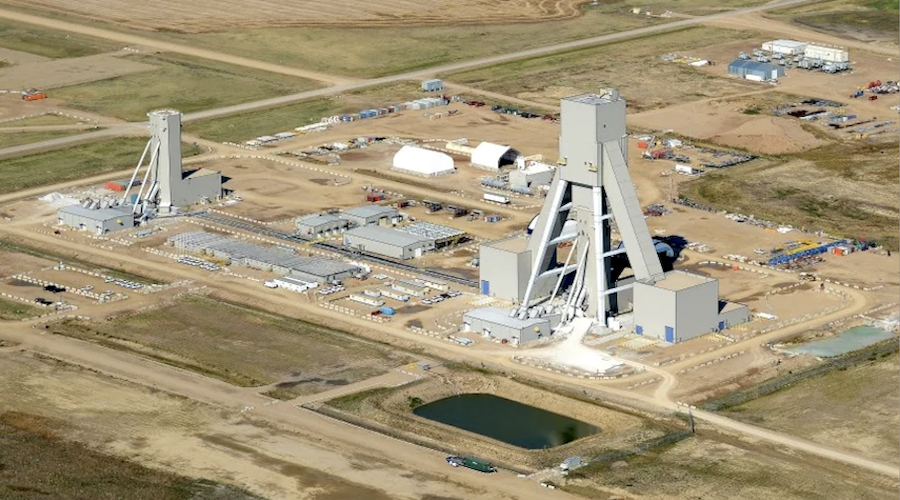CALIFORNIA – Last week, Google honoured Canadian geologist Joseph Burr Tyrrell by dedicating its Doodle to him.
Tyrrell, who was born in Weston on Nov. 1, 1858, is best known for having discovered the Albertosaurus sarcophagus in 1905 around the foothills between Calgary and Edmonton and the illustration represents just that. However, the Ontario man had a prolific career in mining, having discovered coal around Drumheller, the Kirkland Lake gold deposit in northern Ontario and paying special attention to the development of the district of Cobalt.
His interest in the mineral world started during his undergraduate studies at the University of Toronto, where he excelled at chemistry, biology, mineralogy, and geology. After graduating, he thought he would go into law but a threat of tuberculosis made him change his mind. He opted for the outdoor life of a geologist.
Working at the Geological Survey of Canada from 1880 on, Tyrrell made traverses through the Crows Nest, Kootenay, and Kicking Horse passes in the Rocky Mountains, as well as in Alberta.
By the end of the 19th century, he decided to explore the Pre-Cambrian shield area of northern and Arctic Canada, where he made a series of journeys by wagon and canoe. One of such treks took him from the Lake Athabasca Post of the Hudson’s Bay Company to the Barren Lands, the treeless arctic wastes lying to the west of Hudson Bay.
Once he finished his northern expeditions, where he also documented glacial geology and confirmed that three Pleistocene ice sheets had covered northern and eastern Canada, he was moved to the Yukon. It was the time of the Klondike gold rush which interested him so much that, upon his return to Ottawa, he quitted his job and went into the private sector to be able to go back to the territory. To do so, he became a geological and mining consultant and quickly won the confidence of gold miners operating in the area.
According to the Complete Dictionary of Scientific Biography, Tyrrell’s career in the Yukon saw him contributing to the geology of alluvial gold and learning about the transition from streaming to large-scale hydraulic mining.
In 1894, he married Mary Edith Carey, who would later become the founder and first president of the Women's Association of the Mining Industry of Canada.
In 1895, the couple returned to the east. Tyrrell became a consultant in Toronto and was retained by the Anglo-French Mining Company of London. During this period, he focused his attention on the silver mining district of Cobalt, located in eastern Ontario. At the same time, he discovered the Kirkland Lake gold deposit, which he predicted from structural reasoning. “The sinking of a 600-metre shaft proved the orebody and led to the founding of the highly successful Kirkland Lake Gold Mining Company. Tyrrell was president of the company until a few years before he died,” the Complete Dictionary of Scientific Biography states.
After a career in mining that lasted for more than five decades, Tyrrell retired to northeast Scarborough on the Rouge River, where he established apple orchards. He died in Toronto in 1957 at the age of 98.
This story first appeared on www.Mining.com.





Comments
E Marion
https://en.wikipedia.org/wiki/Kirkland_Lake
Tom Price discovered a boulder containing gold on a visit to the area in 1906.[5]:8
In 1911, important claims were made along the Main Break. John Hunton staked claims on 18 Feb. 1911, which were incorporated as the Hunton Gold Mines Ltd. in April 1914, eventually becoming part of the Amalgamated Kirkland. Stephen Orr filed claims on 22 Feb. 1911, the basis for the Teck-Hughes Mine and the Orr Gold Mines Ltd, which was incorporated in June 1913. George Minaker staked claims on 23 Feb. 1911, part of which he sold to Oakes in Sept. 1912, becoming part of the Lake Shore Mine. John Reamsbottom filed claims on 18 April 1911 which became part of the Teck-Hughes Mine. C.A. McKane staked claims on 20 April 1911, which became the Kirkland Lake Gold Mine. A. Maracle staked claims on 5 June 1911 which became part of the Townsite claims. Melville McDougall staked claims on 27 June 1911, which he transferred to Oakes on 6 Sept. 1912, and became the part of the Lake Shore Mine. Jack Matchett staked a claim on 7 July 1911, later acquired by Oakes, which became part of the Townsite Mine. On 10 July 1911, Dave Elliott staked claims which became the Macassa Mine. “Swift” Burnside staked claims on 26–28 July 1911 which became part of the Tough-Oakes Burnside Mine. Bill Wright filed claims on 27–29 July 1911, and on 16 Sept. 1911 with his brother-in-law Ed. Hargreaves, which became part of the Sylvanite Mine. This claim extended into the lake’s southeastern portion. More importantly, Wright found free gold near the future site of the Discovery Shaft. Ed. Horne staked a claim on 12 Oct. 1911, which became part of the Townsite Mine, and the incorporation of Kirkland Townsite Gold Mines Ltd. in 1917. On 8 Jan. 1912, Harry Oakes partnered with the Tough brothers plus Clem. Foster, who owned the Foster Silver Mine in Cobalt, staked claims which incorporated the No. 2 Vein and eventually led to the incorporation of Tough-Oakes Gold Mines Ltd. in 1913. Oakes filed additional claims on 30 July 1912, and Wright on 26 Aug. 1912, both within the lake and eventually becoming parts of the Lake Shore Mine……………………….
Kirkland Lake Gold Mines Ltd. was incorporated in 1913 before the property was taken over by Cobalt’s Beaver Consolidated Mines Ltd. after a shaft was sunk 80 feet. They formed the Kirkland Lake Gold Mining Company in 1915 and the main shaft was sunk 800 feet, which prompted the building on a mill in 1919. Shafts reached a depth of 1600 feet before the mine closed in 1924. Operations restarted in 1926 with new financing organized by Dr. J.B. Tyrrell, and high-grade ore was found at 2475 feet. By 1930, the mine had reached a depth of 4000 feet and had acquired the Chaput-Hughes claim to the south. The property was acquired by the Kirkland Minerals Corporation in 1956